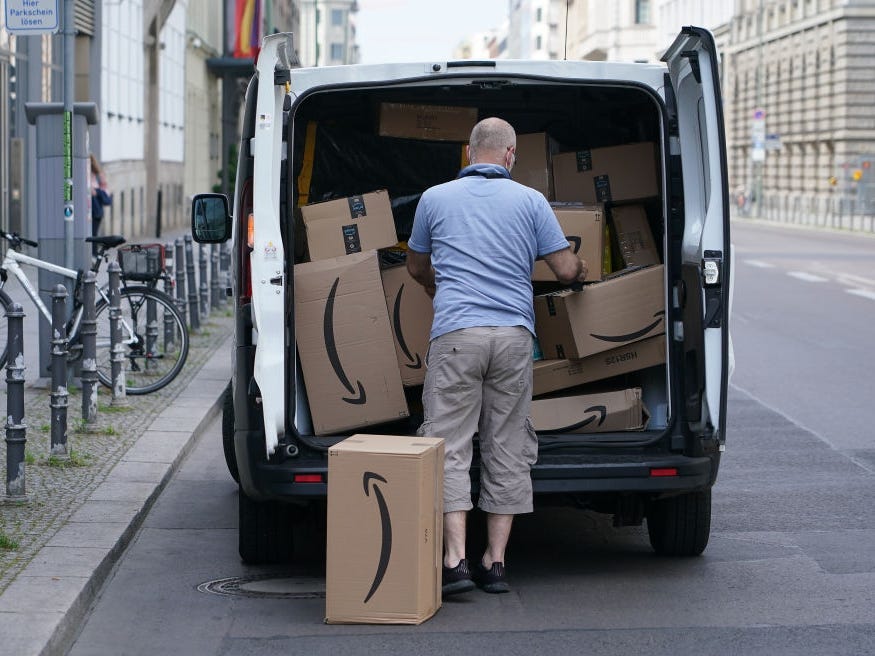
- Amazon has rolled out new delivery and collection options that could help it cut some of the biggest costs associated with home delivery.
- The e-commerce giant is encouraging shoppers to collect their orders from its bricks-and-mortar stores or neighborhood Amazon “hubs.”
- Not having items delivered to their home will help shoppers keep their “holiday season spoiler free,” Amazon said.
- But it could also save Amazon on costs associated with the “last mile” of delivery, where drivers sometimes have to delivery orders several miles apart with only one or two packages at each stop.
- Amazon did not immediately respond to a request for comment.
- Visit Business Insider’s homepage for more stories.
Amazon has rolled out new delivery and collection options so that shoppers can keep their holiday orders “spoiler-free” — and is encouraging customers to collect their packages rather than relying on delivery to their homes.
Amazon customers can get their orders delivered to bricks-and-mortar Amazon 4-Star and Amazon Books stores “to keep gifts a secret from those at-home,” the e-commerce giant said in a press release detailing its holiday delivery options.
This is free for Prime members, with no minimum purchase amount, and same-day collection is available.
These stores aren’t very widespread across the US, so Amazon is also encouraging customers to collect orders from its “Hubs.” These self-service lockers or manned counters located in neighborhoods, apartment blocks, and inside stores allow customers to pick their orders up contact-free.
Amazon also suggested that Prime customers can use its “Amazon Day” service, which consolidates multiple deliveries so that shoppers receive their order on one designated day.
This reduces the number number of deliveries while making it easier to keep holiday orders secret, Amazon said.
The Amazon release focused on potential benefits for customers — but the new options could also help it overcome some of the biggest expenses associated with home delivery, as its prepares for a holiday season even busier than usual.
US holiday e-commerce sales are expected to grow by more than a third this year, thanks in part to trends such as "guilt-gifting," and this could pose delivery challenges.
As e-commerce continues to become more popular, retailers are increasingly expected to offer fast and cheap, or even free, delivery.
Traditionally, the "last mile" of delivery – taking it to the customer's door from the distribution center – is the most difficult and expensive part of the process. In rural areas, delivery points can be several miles apart, with only one or two packages getting dropped off at each one. In urban areas, while stops are closer together, traffic delays can slow this down.
By encouraging customers to collect their orders from distribution points such as stores and Hubs, which requires far fewer individual stop-off points, Amazon can cut out these costs.
Amazon Day similarly means that the e-commerce giant can consolidate multiple smaller deliveries into one larger one, making it cheaper and easier for the company.
Amazon did not immediately respond to a request for comment.
Amazon has said it expects to record about $4 billion in COVID-related costs this quarter. This comes from indirect costs such as loss in productivity alongside direct ones like buying protective gear for its employees.
Amazon isn't the only retailer preparing for a surge of online orders. Walmart is adding 42 pop-up e-commerce distribution centers, which will ship up to 30% of its holiday orders, alongside hiring 20,000 e-commerce warehouse workers.
Macy's, meanwhile, has partnered with DoorDash for the Black Friday and holiday season. The delivery platform is "expecting the unexpected" this year.
